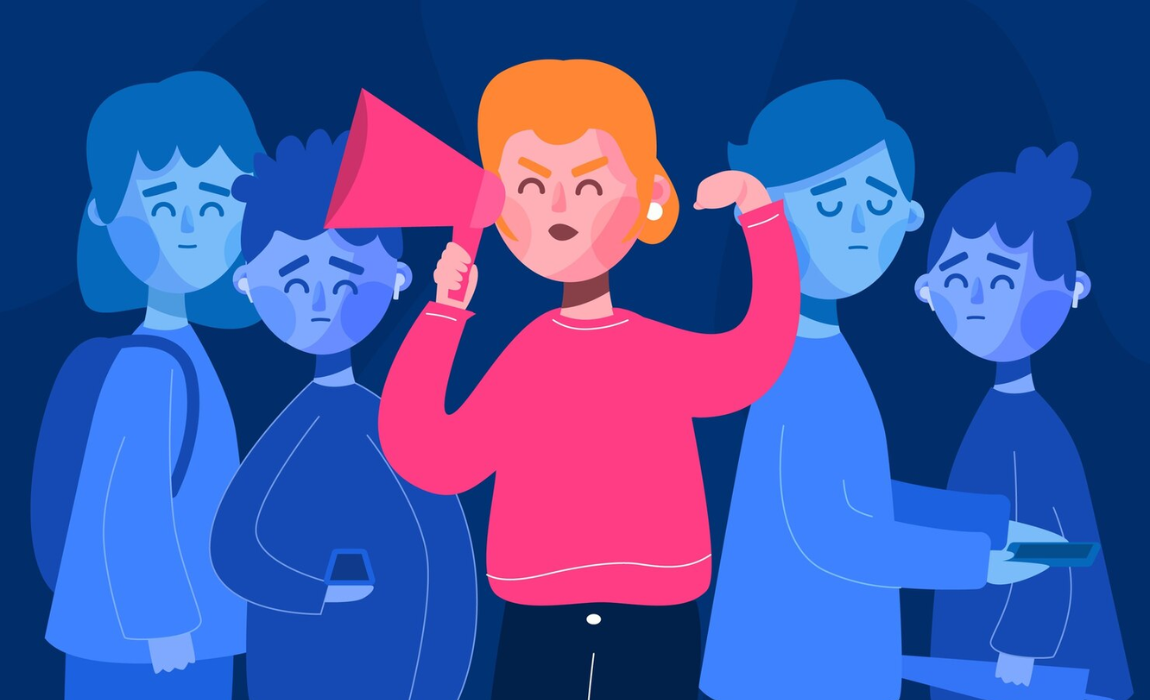
Speech vs Silence: Hate Speech and Limits of Free Expression
The Indian Constitution, through Article 19(1)(a), guarantees the fundamental right to freedom of speech and expression. Yet, this right is not absolute. Article 19(2) imposes reasonable restrictions in the interest of public order, morality, decency, and the sovereignty and integrity of India. The dilemma that India faces today is how to draw the fine line between free speech, which sustains democracy, and hate speech, which can corrode its very foundation.
In recent years, the country has witnessed an alarming rise in hate speech. From provocative political rallies to vitriolic social media campaigns, public discourse is increasingly marked by inflammatory language that targets communities and individuals based on religion, caste, gender, or ideology. The viral nature of digital platforms makes such speech far more destructive, amplifying polarization and, at
times, even inciting violence. The recent debates surrounding hate-filled sloganeering during election campaigns and the misuse of online platforms to spread communal animosity underscore the urgency of the issue.
The Supreme Court, cognizant of this challenge, has repeatedly emphasized that hate speech strikes at the very root of fraternity, a constitutional value enshrined in the Preamble. In Pravasi Bhalai Sangathan v. Union of India (2014), the Court highlighted the inadequacy of existing laws in effectively tackling hate speech. More recently, in 2023, the Court expressed concern over the normalization of hate speech in political discourse and urged governments to act promptly without waiting for judicial intervention. However, the judiciary also walks a tightrope: it must protect the vibrancy of free expression while preventing words from becoming weapons of division.
Globally, democracies are grappling with similar tensions. The United States protects even offensive speech under the First Amendment, placing faith in the “marketplace of ideas” to counter dangerous narratives. In contrast, European nations, scarred by histories of fascism, adopt stricter laws against hate propaganda. India’s position, situated between these two extremes, demands a calibrated approach—neither allowing unfettered speech that could endanger communal harmony, nor imposing sweeping censorship that stifles dissent.
The contemporary situation in India makes this debate all the more urgent. The upcoming state elections have already seen instances where political leaders resort to divisive rhetoric.
Social media, often manipulated through fake news and targeted propaganda, becomes a breeding ground for hate narratives that transcend geographical limits. The Delhi riots of 2020, where online hate was found to have aggravated ground-level violence, remain a stark reminder of the real-world consequences of unchecked speech.
Yet, the solution cannot lie solely in criminalizing speech. Overly broad laws, such as Sections 153A and 295A of the Indian Penal Code, risk being misused to silence legitimate criticism or unpopular opinions. Judicially, the test of “imminent incitement to violence” as laid down in Shreya Singhal v. Union of India (2015) offers a more balanced lens: speech should be restricted only when it crosses the threshold of directly provoking lawless action. This ensures that robust debate, satire, and even uncomfortable criticism remain protected, while hate that threatens peace is curbed.
Ultimately, the challenge before the judiciary and policymakers is to strengthen institutional mechanisms that counter hate speech without weaponizing the law against free thinkers. Media platforms must adopt stricter standards of accountability, and civil society must actively counter hate with dialogue, empathy, and education. The judiciary, meanwhile, must continue to refine principles that safeguard free expression while preventing its abuse.
The soul of democracy lies in protecting the right to speak, but also in protecting citizens from speech that dehumanizes and divides. As India navigates its polarized present, courts, governments, and citizens alike must answer: when does silence protect democracy, and when does speech destroy it? The answer lies not in choosing one over the other, but in ensuring that speech remains the lifeblood of democracy—not the poison that weakens it.
